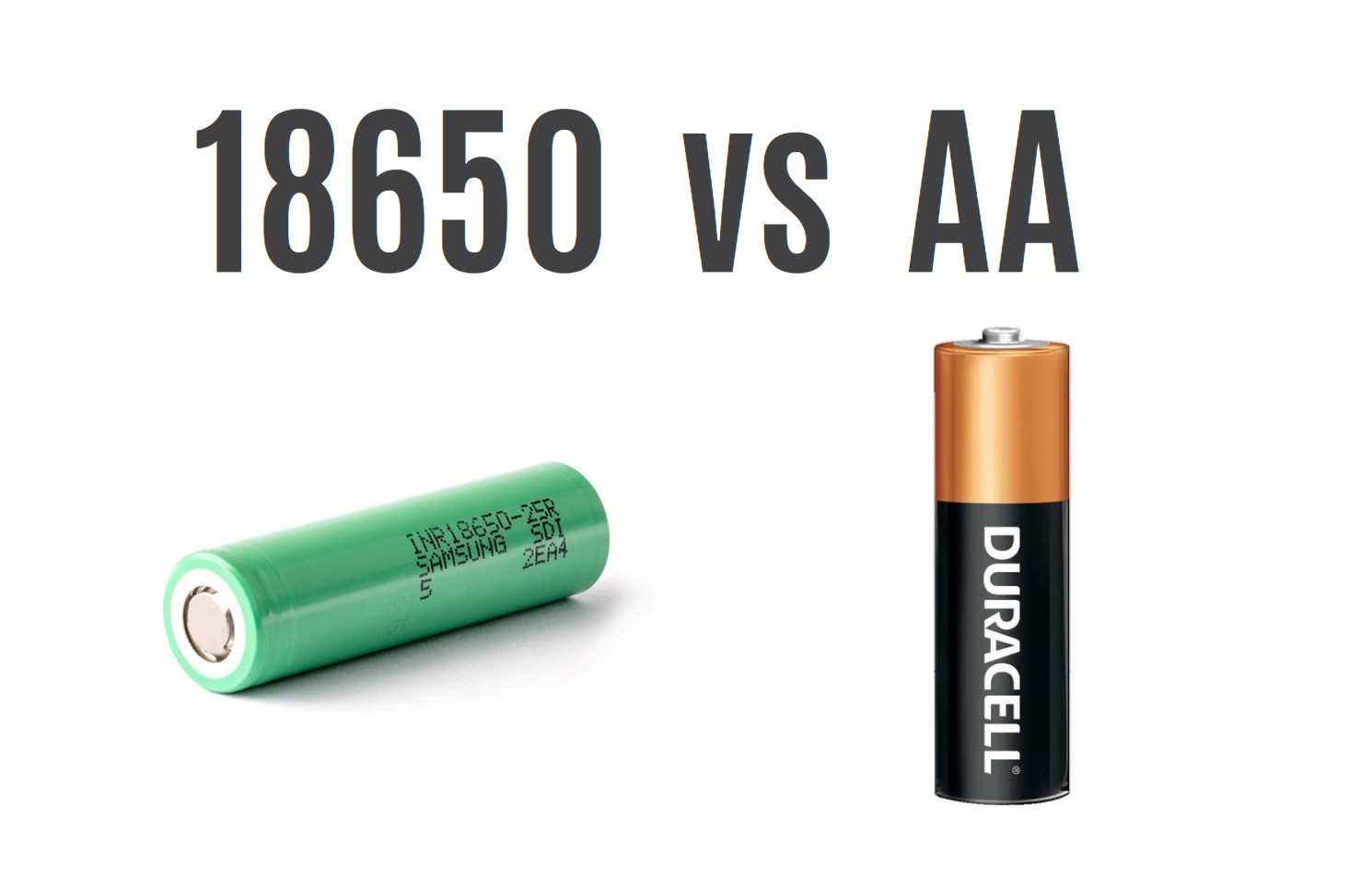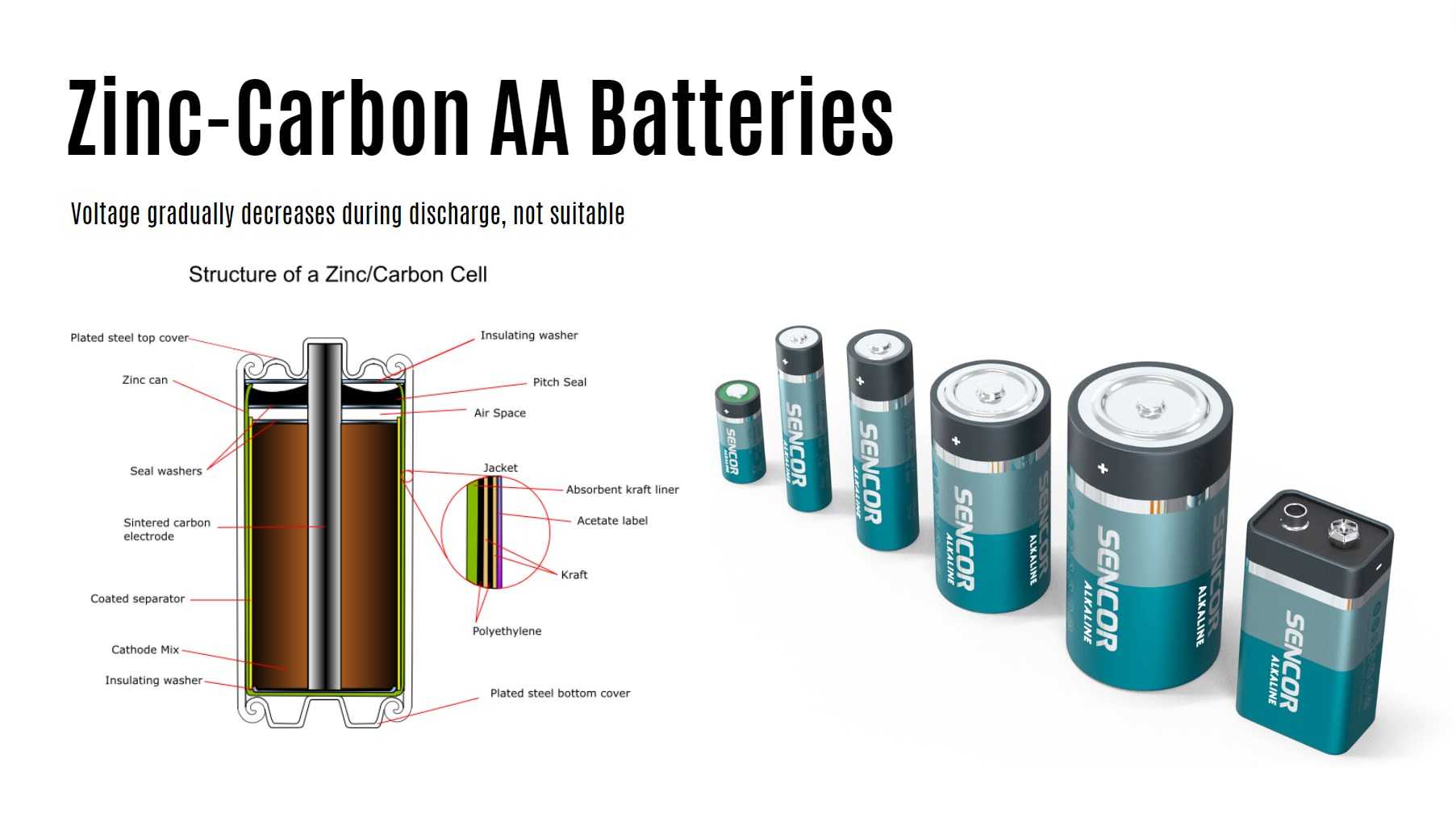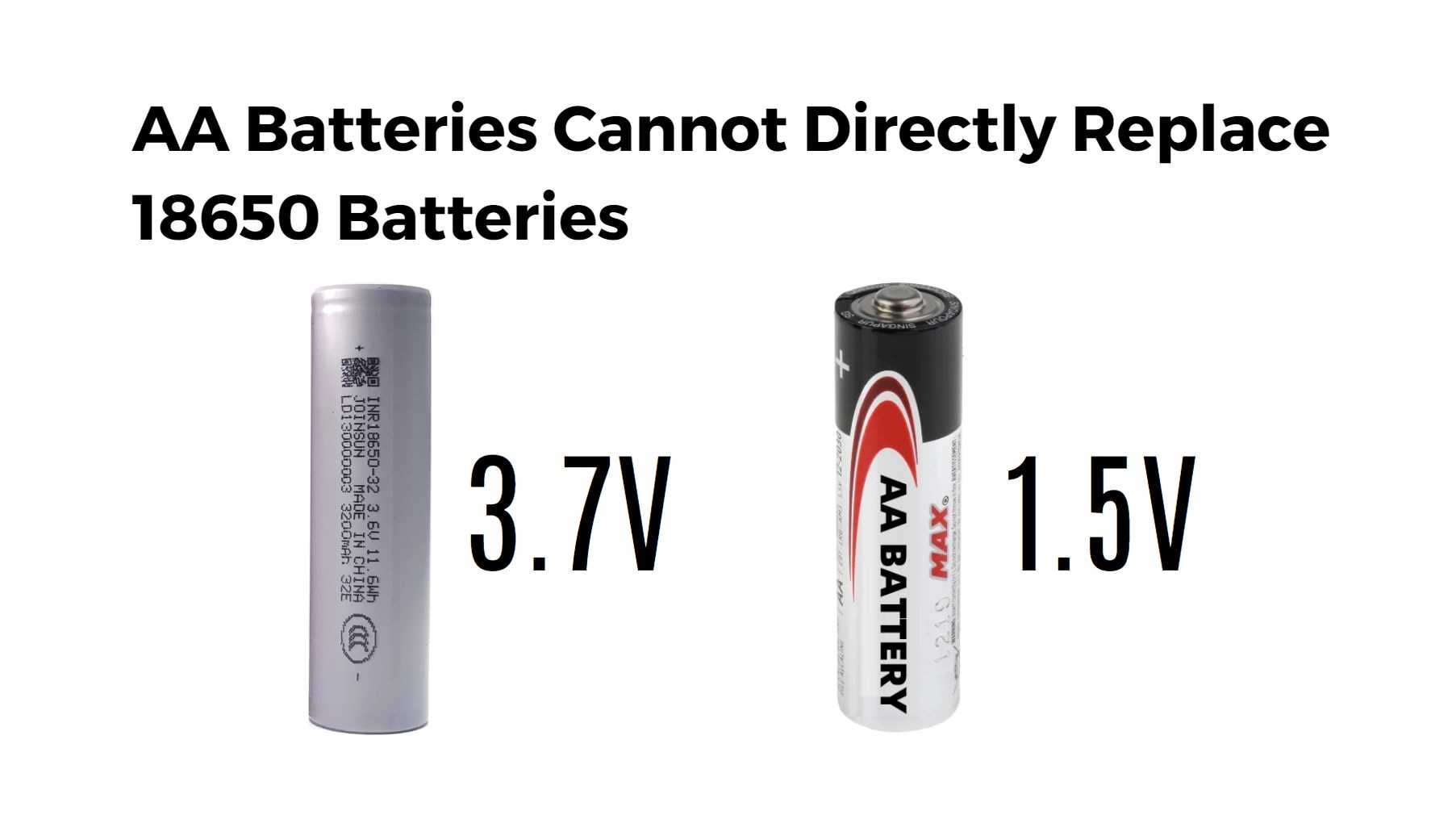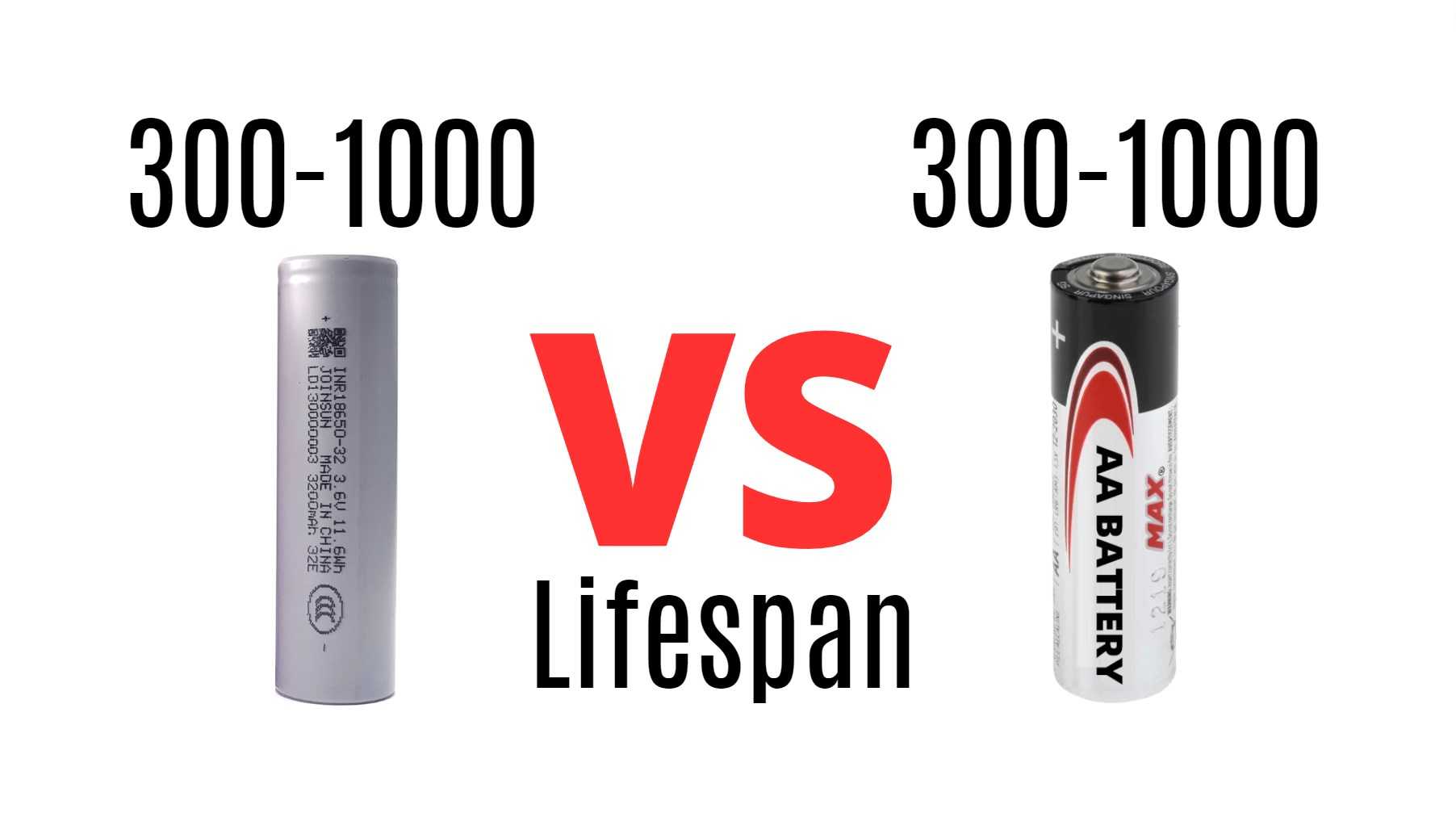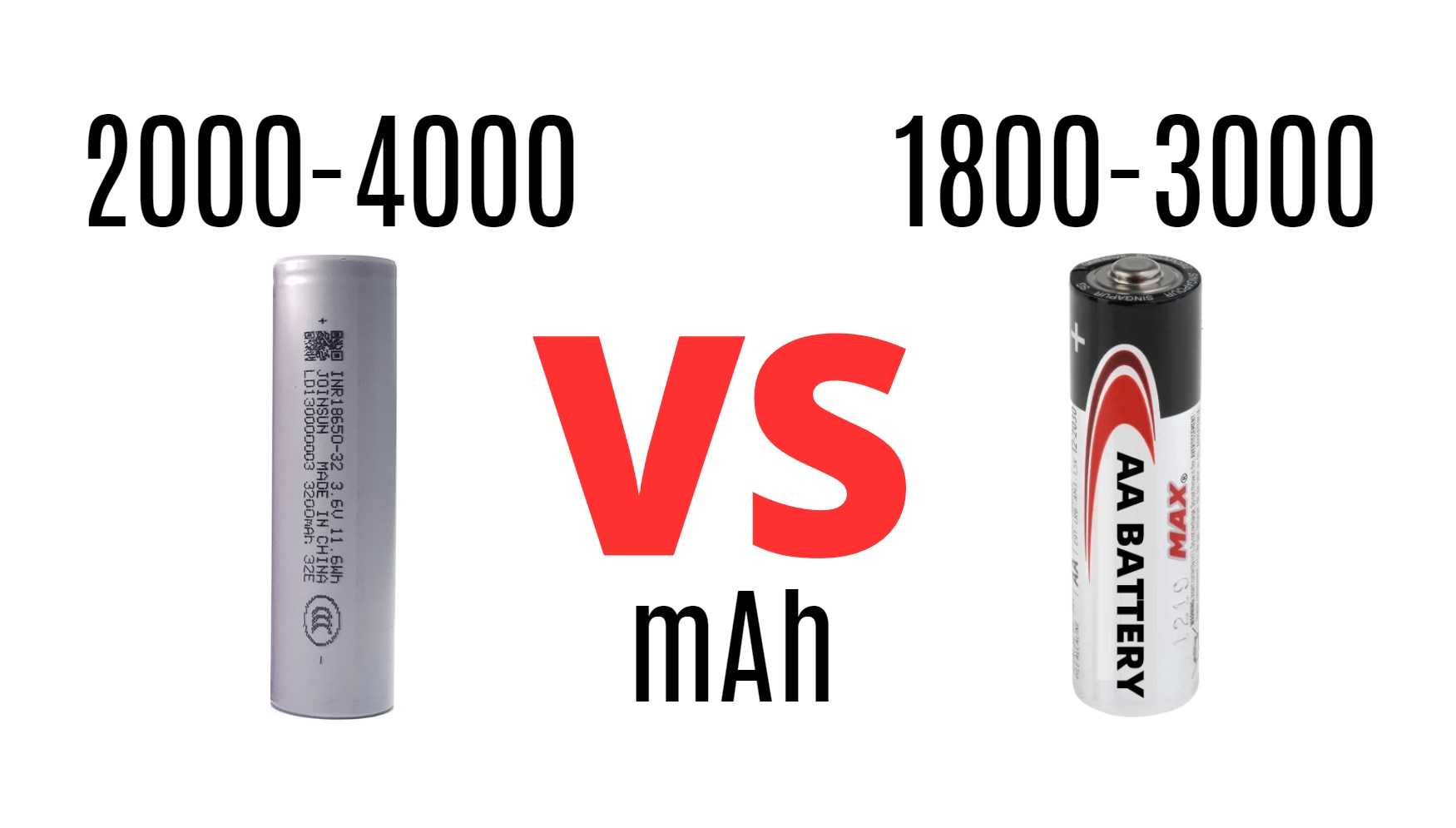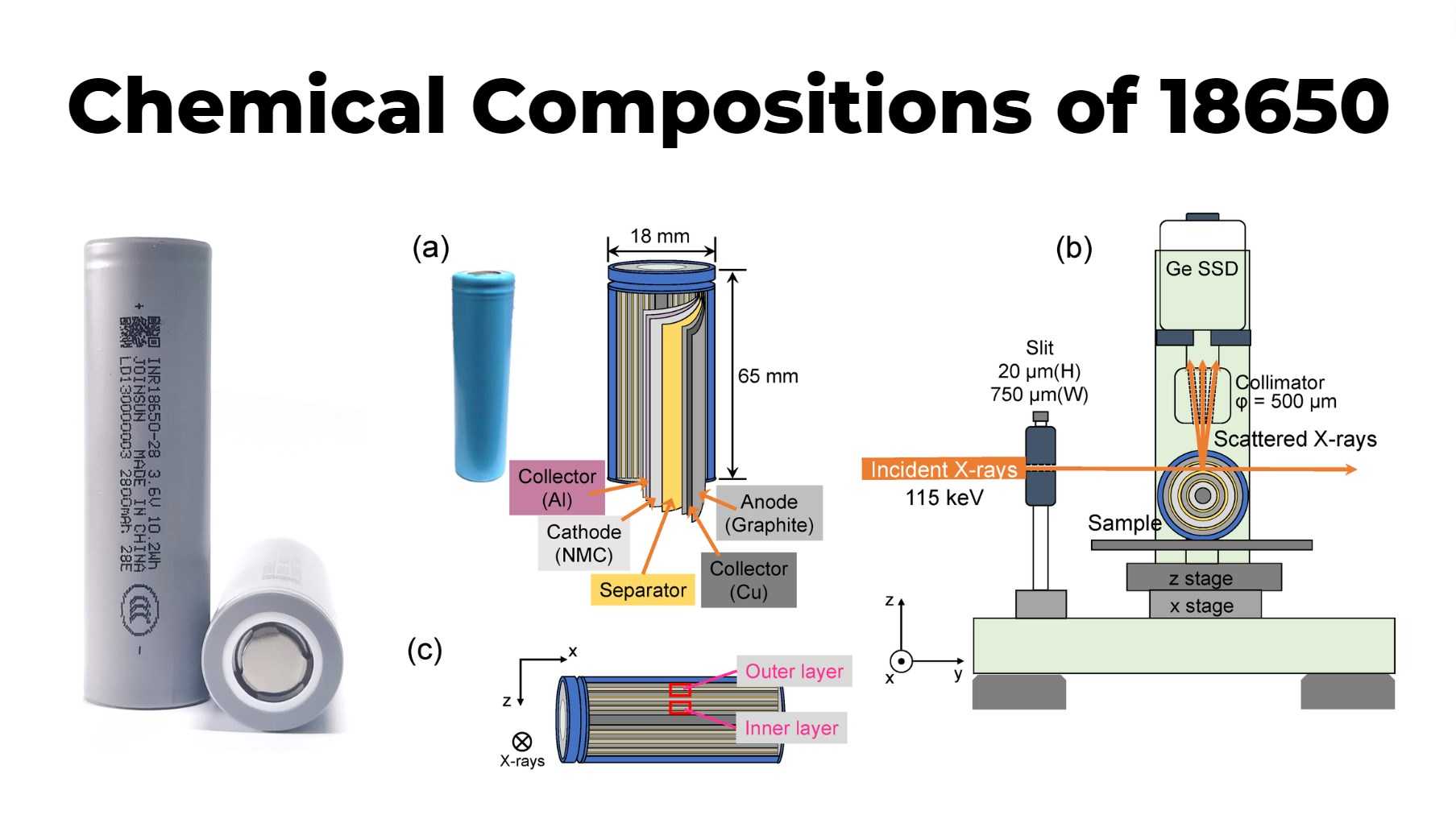Welcome to our extensive guide on understanding the key differences between 18650 batteries and AA batteries. In this article, we delve into the specifications, uses, advantages, and care tips for both types of batteries to help you make an informed decision on which is best suited for your needs.
Understanding 18650 Batteries
What is an 18650 Battery?
An 18650 battery is a type of lithium-ion rechargeable battery that is widely used in high-drain devices. These batteries are named for their dimensions: 18mm in diameter and 65mm in length. Known for their high energy density, long cycle life, and robust performance, 18650 batteries are commonly found in devices such as laptops, power tools, flashlights, and electronic cigarettes.
Wholesale lithium golf cart batteries with 10-year life? Check here.
Key Features of 18650 Batteries
- High Capacity: Typically ranging from 1800mAh to 3500mAh, allowing extended use without frequent recharging.
- High Discharge Rate: Suitable for devices that require a substantial amount of power.
- Rechargeable: Capable of being recharged hundreds of times, making them cost-effective in the long run.
- Stable Voltage: Provides a consistent voltage of around 3.7V, ensuring steady performance.
Understanding AA Batteries
What is an AA Battery?
AA batteries are a standard size of single-cell cylindrical batteries. They are available in several chemistries, including alkaline, nickel-cadmium (NiCd), nickel-metal hydride (NiMH), and lithium-ion (Li-ion). AA batteries are versatile and can be found in a myriad of household and portable electronic devices like remote controls, clocks, and toys.
Key Features of AA Batteries
- Wide Availability: Easily available in most retail stores and online.
- Variety of Chemistries: Offers flexibility depending on the device’s power requirements.
- Standard Size: Commonly used and interchangeable among devices that specify AA batteries.
- Cost-Effective: Generally cheaper than 18650 batteries, especially in bulk.
Comparing 18650 Batteries and AA Batteries
Size and Dimensions
| Feature | 18650 Battery | AA Battery |
|---|---|---|
| Diameter | 18mm | 14.5mm |
| Length | 65mm | 50.5mm |
| Weight | 45g to 50g | 23g (alkaline) |
Performance and Capacity
| Feature | 18650 Battery | AA Battery |
|---|---|---|
| Capacity | 1800mAh to 3500mAh | 600mAh to 2800mAh |
| Voltage | 3.7V | 1.5V (alkaline), 1.2V (NiMH) |
| Rechargeability | Yes | Depends on chemistry (NiMH is rechargeable) |
| Cycle Life | Up to 500+ cycles | Varies (NiMH up to 500 cycles) |
Usage and Application
| Feature | 18650 Battery | AA Battery |
|---|---|---|
| Common Uses | Laptops, flashlights, power tools, e-cigarettes | Remote controls, toys, clocks, cameras |
| Energy Density | High | Moderate to low |
| Cost | Higher initial cost | Lower initial cost |
Want OEM lithium forklift batteries at wholesale prices? Check here.
Choosing the Right Battery
When deciding between 18650 batteries and AA batteries, consider the following factors:
- Device Requirement: Check the device’s specifications to determine the compatible battery type.
- Usage Frequency: For high-drain devices used frequently, 18650 batteries may be more suitable due to their higher capacity and rechargeability.
- Cost Efficiency: While 18650 batteries have a higher initial cost, their rechargeability can make them more cost-effective over time. AA batteries, on the other hand, are less expensive upfront and widely available.
- Convenience: AA batteries are more accessible and can be purchased almost anywhere, making them convenient for low-drain, everyday devices.
Caring for Your Batteries
18650 Battery Care Tips
- Avoid Extreme Temperatures: Store and use in environments between -20°C and 60°C.
- Keep Clean: Ensure the battery terminals are free from dirt and corrosion.
- Proper Storage: When not in use, store in a cool, dry place away from direct sunlight.
- Safety Precautions: Do not use damaged batteries, and use a protective case to prevent short circuits.
AA Battery Care Tips
- Avoid Mixed Use: Do not mix old and new batteries or different chemistries in the same device.
- Proper Disposal: Follow local guidelines for recycling or disposing of batteries.
- Storage: Store in a cool, dry place, preferably in their original packaging or a battery case.
- Check Expiration Dates: Ensure batteries are not past their expiration date to avoid leakage and damage to devices.
Conclusion
Understanding the differences between 18650 batteries and AA batteries is crucial for selecting the right power source for your devices. While 18650 batteries offer high capacity, long cycle life, and suitability for high-drain devices, AA batteries provide versatility, wide availability, and cost-effectiveness for everyday low-drain applications. By evaluating your specific needs and following proper care guidelines, you can maximize the performance and lifespan of your chosen batteries.
FAQs
Which Battery Better for Gadgets: AA or 18650?
Looking for the ideal battery for your gadgets? When comparing AA and 18650 batteries, consider their size, voltage, and capacity. The 18650 battery is a rechargeable lithium-ion battery with higher energy density and capacity, making it suitable for high-drain devices like laptops and electric vehicles. The AA battery, on the other hand, is a smaller alkaline battery that is widely available and affordable, making it convenient for low-power devices. Choose the battery that best suits your gadget’s power requirements and usage needs.
Which AA Battery Chemistries are Rechargeable?
- Nickel-Cadmium (NiCd): Nominal voltage of 1.2 volts, suffers from memory effect.
- Nickel-Metal Hydride (NiMH): Nominal voltage of 1.2 volts, higher capacity, no memory effect.
- Nickel-Zinc (NiZn): Higher voltage of 1.6 volts, backward compatible with non-rechargeable AA batteries.
- Lithium-Ion (Li-ion): Higher voltage of 3.6-3.7 volts, offers high capacity, requires special chargers.
What are Differences Between Rechargeable and Non-Rechargeable AA Batteries?
-
Rechargeable Batteries:
- Can be used multiple times, offering cost-effectiveness in the long run.
- Examples include NiMH and Li-ion batteries.
- Higher initial cost but can be recharged hundreds of times.
- More sustainable and eco-friendly option.
-
Non-Rechargeable Batteries:
- Intended for single use and cannot be recharged.
- Examples include alkaline or lithium batteries.
- Lower upfront cost but contribute to waste pollution.
- Convenient and ideal for low-drain devices or infrequent use.
-
Considerations:
- Cost: Rechargeable batteries are cost-effective in the long run, while non-rechargeable batteries have a lower upfront cost.
- Environmental Impact: Rechargeable batteries are more eco-friendly, reducing waste pollution.
- Usage Patterns: Choose based on your device’s power requirements and frequency of use.
What are Characteristics of Zinc-Carbon AA Batteries?
- Basic Structure: Zinc-carbon batteries consist of a zinc anode, carbon cathode, manganese dioxide, and an ammonium chloride electrolyte paste.
- Low-Drain Devices: Zinc-carbon batteries are suitable for low-power devices such as clocks, remote controls, toys, and transistor radios.
- Affordability and Availability: Zinc-carbon batteries are cost-effective and widely available in various shapes, sizes, and capacities.
- Energy Density: Zinc-carbon batteries have lower energy density compared to other battery chemistries.
- Temperature Characteristics: Zinc-carbon batteries have poor temperature characteristics, affecting their performance in extreme temperatures.
- Voltage Stability: The voltage of zinc-carbon batteries drops steadily with discharge.
- Suitable for Everyday Devices: Choose zinc-carbon batteries for everyday devices that do not require high power consumption.
What is Typical Capacity and Voltage of Alkaline AA Battery?
- Typical Capacity: Alkaline AA batteries have a capacity rating ranging from 1000mAh to 3000mAh, depending on the brand and quality.
- Nominal Voltage: Alkaline AA batteries have a nominal voltage rating of 1.5 volts, ensuring compatibility with a wide range of devices.
- Voltage Variations: It’s important to note that the actual voltage output of alkaline AA batteries may vary during use. As the battery discharges, its voltage gradually drops.
- Consider Device Requirements: Choose alkaline AA batteries with the appropriate capacity and voltage for your devices to ensure optimal performance and longevity.
Is 18650 Battery Equivalent to 2 CR123 Batteries?
- 18650 Battery: The 18650 battery is a rechargeable lithium-ion battery with a nominal voltage of 3.7 volts. It is commonly used in high-drain devices such as laptops, flashlights, and electric vehicles.
- CR123 Batteries: CR123 batteries are non-rechargeable lithium batteries with a nominal voltage of 3 volts. They are often used in devices like flashlights and cameras.
- Equivalence: While it may be possible to use 2 CR123 batteries in place of an 18650 battery in some devices, it is important to consider the voltage difference and compatibility with the device’s power requirements.
- Voltage Difference: The nominal voltage of an 18650 battery is 3.7 volts, while CR123 batteries have a nominal voltage of 3 volts. This voltage difference may impact the performance and functionality of the device.
- Compatibility: Before substituting an 18650 battery with 2 CR123 batteries, it is crucial to check the device’s compatibility and power requirements. Not all devices designed for an 18650 battery can accommodate 2 CR123 batteries.
- Considerations: When considering battery options, factors such as voltage, capacity, and compatibility with the device’s power requirements should be taken into account.
What are Size and Voltage Differences Between 18650 and AA Batteries?
- Size Differences: The 18650 battery is larger in size, measuring approximately 18.6mm x 65.2mm, while the AA battery is smaller, measuring approximately 14.5mm x 50.5mm.
- Voltage Differences: The voltage of a standard 18650 battery ranges from 3.2 to 3.7 volts, while the voltage of an AA battery is typically 1.5 volts.
- Non-Interchangeability: Due to the differences in size and voltage, 18650 and AA batteries cannot be used interchangeably in devices.
- Consider Device Requirements: When selecting batteries for your devices, consider the size and voltage requirements specified by the manufacturer to ensure compatibility and optimal performance.
Can AA Batteries Replace 18650 Batteries?
- Size Difference: AA batteries are smaller in size compared to 18650 batteries, which can impact their compatibility with certain devices.
- Voltage Difference: AA batteries have a lower voltage compared to 18650 batteries, which can affect the performance and power requirements of devices.
- Capacity Difference: AA batteries have a lower capacity compared to 18650 batteries, which can result in shorter runtime and more frequent battery changes.
- Compatibility Considerations: When considering the replacement of 18650 batteries with AA batteries, it is crucial to ensure compatibility with the device’s power requirements and consider the trade-offs in terms of size, voltage, and capacity.
- Device Performance: Replacing 18650 batteries with AA batteries may result in differences in device performance, runtime, and power output. It is important to assess the impact on device performance before making the switch.
Which Battery is Better, 18650 or AA?
- Size and Capacity: The 18650 battery is larger in size, with a capacity ranging from 1800 to 3500 mAh, while the AA battery is smaller, with a capacity ranging from 2000 to 3000 mAh.
- Voltage: The 18650 battery has a nominal voltage of 3.7 V, while the AA battery has a nominal voltage of 1.2 V (rechargeable) or 1.5 V (non-rechargeable).
- Usage: The 18650 battery is commonly used in high-drain devices like flashlights, laptops, and vape pens, while the AA battery is suitable for low-drain devices like home appliances, remotes, and small toys.
Can AA Batteries Be Replaced with 18650 Batteries?
- Size and Voltage: AA batteries are smaller and have a nominal voltage of 1.2V (rechargeable) or 1.5V (non-rechargeable), while 18650 batteries are larger and have a nominal voltage of 3.7V.
- Capacity: 18650 batteries have a higher capacity, providing longer-lasting power for high-drain devices, while AA batteries have a lower capacity, suitable for low-drain devices.
- Device Compatibility: It’s important to use the specific type of battery recommended by the device manufacturer to ensure optimal performance and safety.
What is the Lifespan of 18650 and AA Batteries?
- 18650 batteries, especially lithium-ion and lithium iron phosphate batteries, can endure several thousand charge-discharge cycles.
- Non-rechargeable AA batteries are disposable and can only be used once.
- Rechargeable AA batteries, such as nickel-metal hydride (NiMH) batteries, can support 500-1500 charge-discharge cycles.
- The average lifespan of a typical AA battery is around 2 to 3 years with normal use.
What is the Performance Difference Between 18650 and AA Batteries?
- Size: 18650 batteries are larger, with dimensions of 18 mm by 65 mm, while AA batteries are smaller, with dimensions of 14.5 mm by 50.5 mm. The size difference allows for variations in capacity and energy storage.
- Voltage: 18650 batteries typically have a higher nominal voltage, ranging from 3.2V to 4.2V, while AA batteries have a lower nominal voltage, usually around 1.2V (rechargeable) or 1.5V (non-rechargeable).
- Capacity: 18650 batteries have a higher capacity, ranging from 1800mAh to 5000mAh, compared to AA batteries, which typically range from 600mAh to 2700mAh. This means that 18650 batteries can store more energy and provide longer usage times.
- Performance: AA batteries are suitable for low-energy devices and have a balance between cost, convenience, and performance. On the other hand, 18650 batteries excel in high-drain applications and can provide sustained power for devices with higher energy demands.
- Usage: AA batteries are commonly used in everyday household items like remotes, toys, and clocks, while 18650 batteries are often found in devices that require higher power, such as laptops, flashlights, and electric vehicles.
What is the Capacity of 18650 and AA Batteries?
- 18650 batteries have a higher capacity compared to AA batteries. The highest capacity 18650 battery can reach 3,600mAh, providing longer usage times for high-drain devices.
- AA batteries typically range from 600mAh to 2,750mAh, making them suitable for low-to-moderate energy consumption devices.
- The capacity of a battery is an important consideration when choosing the right power source for your devices. Higher capacity batteries are ideal for devices that require sustained power, while lower capacity batteries are suitable for devices with lower energy demands.
What is the Voltage of 18650 and AA Batteries?
- 18650 batteries have a higher voltage compared to AA batteries. The nominal voltage of 18650 batteries ranges from 3.2 to 3.7 volts, providing a higher electrical potential difference.
- AA batteries, on the other hand, have a voltage of 1.5 volts (non-rechargeable) or 1.2 volts (rechargeable). This lower voltage is suitable for devices with lower energy requirements.
- The voltage difference between 18650 and AA batteries affects the compatibility and performance of devices. It is important to use batteries with the correct voltage to ensure optimal functionality.
What Are the Chemical Compositions of 18650 and AA Batteries?
- 18650 batteries are rechargeable lithium-ion batteries, known for their high energy density and long cycle life. They are commonly used in devices that require sustained power and higher energy demands.
- AA batteries can be made from various chemistries such as alkaline, zinc-carbon, nickel-cadmium, nickel-metal hydride, or even lithium-ion. The choice of chemistry depends on factors like cost, performance requirements, and environmental considerations.
- Each chemistry has its own advantages and disadvantages. For example, alkaline AA batteries are widely available and have a longer shelf life, while rechargeable nickel-metal hydride (NiMH) AA batteries offer the convenience of reusability.
- The chemical composition of a battery affects its voltage, capacity, self-discharge rate, and other performance characteristics. It’s important to choose the appropriate battery chemistry based on the specific requirements of your devices.


